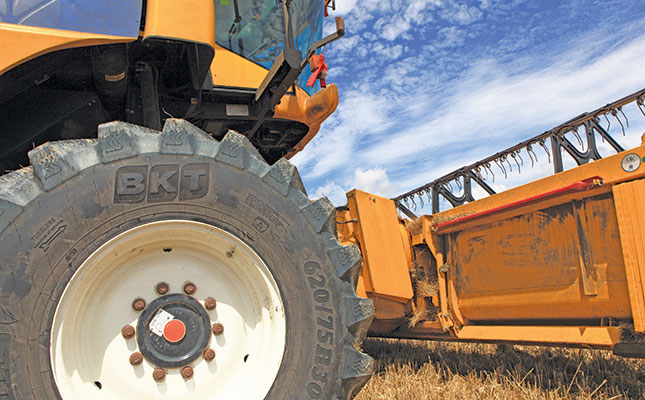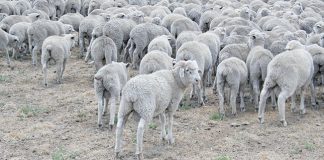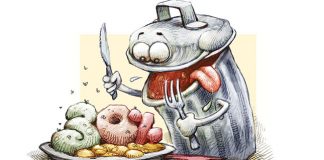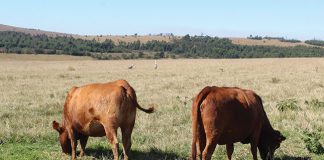
Photo: BKT
The arrival of the Fourth Industrial Revolution has made many farmers feel that the only way to improve their operations’ productivity and efficiency is to invest in new technology.
This is partly true, but best practices and good old experience are still highly relevant and a key part of farming successfully.
Simply looking after the equipment you have and ensuring optimal operating conditions is half the battle won. The next step is to deploy technology to help you run your equipment consistently at optimal conditions.
Tractors and traction
As South Africa’s summer crop areas enter the land preparation phase, now is a good time for farmers to focus on tractors and traction. In short, are your machines transferring all their power to the ground?
Traction is largely determined by the available friction between the tyre and the surface on which it operates. Friction can be increased by adding weight or by selecting the right tyre design.
If tyre pressures and ballasting of the tractors are not set correctly, land preparation will be far more costly. Special care should therefore be taken to optimise these parameters so that the tyres can take the full load and perform at their best.
By simply inflating your tyres to the right pressure, you will save fuel, improve area covered in a day, and decrease soil compaction, which has a direct effect on yield. The combined cost saving can be as much as 14%.
“Wheel slip is the main cause of tyre wear,” says Hennie Hattingh, an expert on tubes and tyres at tyre distributor Tubestone.
Manufacturers recommend a percentage of wheel slip. Applying the correct tyre pressure to carry the load will increase tyre lifespan, as wheel slip can then be decreased to the recommended slip percentage.
Tyre types and setting up
The type of tyres chosen for a tractor is crucial for performace, says Hattingh. By substituting radial tyres with cross-ply tyres, for example, tractor productivity and efficiency will be greatly jeopardised.
The radial tyre is initially more expensive, but its lifespan ultimately makes it far more cost-effective if operated under design conditions.
When it comes to setting up the tractor, the general rule is to ballast the machine to obtain 40% weight at the front and 60% at the rear.
Naturally, the type of implement used also affects the set-up. Equipment such as a plough or ripper applies a down-force on the tractor’s rear axle, and will therefore require a slightly higher pressure in the tyres than a field implement on its own support wheels.
Tyre pressure with a three- point integral implement should be set with the implement hitched and lifted clear off the ground. This will enable you to see if the required three lugs on the rear tyres are touching the soil.
The front tyres can then be deflated slightly to the correct flat plate area (tyre footprint) within the specified tyre pressure margins set out in the manual.
In-field trial results
The percentage saving that you can realise after buying a specific solution is mostly part of a sales discussion, but the results of some in-field trials can be taken as a guide.
The trials were run by a team of experts comparing machine set-ups rather than tyre or tractor brands. The results are summarised in Tables 1 and 2.
| Table 1: Before and after adjusting the tyre pressure on the tractor | ||
| Air pressure: front | BEFORE | AFTER |
| Left: 130kPa | 130kPa, no water | |
| Right: 170kPa | ||
| Air pressure: rear | Left inner: 250kPa | 100kPa, no water |
| Left outer: 230kPa | ||
| Right inner: 230kPa | ||
| Right outer: 220kPa | ||
The rig used for the trial was a New Holland T8050 with a 15-tine Radium chisel plough. It was set up as follows:
- A weight ratio of 40:60 front and rear;
- Sixteen cast-iron nose weights;
- Two 500kg bolt-on weights secured to the inner wheels;
- A working depth of 400mm;
- A working width of 6,5m.

Adding water to wheels
Adding liquid ballast should be a last resort. Generally, water should be used only if the limits on the hub or nose carrying capacities have been reached.
The weight of the water is applied directly to the soil to improve traction, but it is not a necessity. If you need to use water, add it in small increments starting at 25% of capacity and gradually working to a maximum of 40% if required.
Water is a dead weight and requires fuel to move it; all tractor manufacturers therefore recommend that you test the tractor without water in the wheels and preferably increase the chassis weight of the tractor if needed.
Stehan Cloete, a mechanical engineer, is the director of AgTech Africa. Email him
at [email protected].











